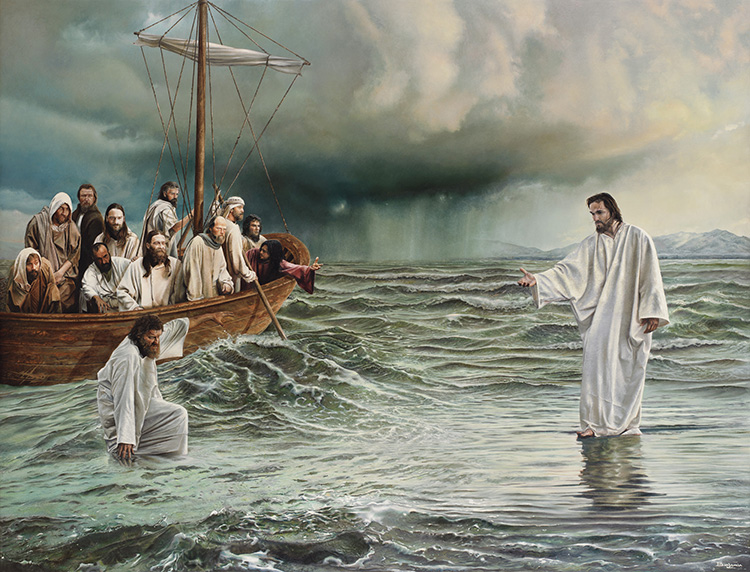I
N INDIA. Viradj, the Son.
I
N CHALDEA. Bel, the Son.
O
PHITE SYSTEM. Ophis (another name for Ennoia), the Son.
Moreover, each of these systems has a triple male trinity, each proceeding separately through itself from one female Deity. So, for instance:
I
N INDIA. The Trinity — Brahma, Vishnu, Siva, are blended into ONE, who is Brahma (neuter gender), creating and being created through the Virgin Nari (the mother of perpetual fecundity).
I
N CHALDEA. The trinity — Anu, Bel, Hoa (or Sin, Samas, Bin), blend into ONE who is Anu (double-sexed) through the Virgin Mylitta.
I
N THE OPHITE SYSTEM. The trinity consisted of the Mystery named Sige, Bythos, Ennoia. These become ONE who is Abrasax, from the Virgin Sophia (or Pneuma), who herself is an emanation of Bythos and the Mystery-god and emanates through them, Christos.
To place it still clearer, the Babylonian System recognizes first — the ONE (Ad, or Ad-ad), who is never named, but only acknowledged in thought as the Hindu Swayambhuva. From this he becomes manifest as Anu or Ana — the one above all — Monas. Next comes the Demiurge called Bel or Elu, who is the active power of the Godhead. The third is the principle of Wisdom, Hea or Hoa, who also rules the sea and the underworld. Each of these has his divine consort, giving us Anata, Belta,
Page 171
and Davkina. These, however, are only like the Saktis, and not especially remarked by theologists. But the female principle is denoted by Mylitta, the Great Mother, called also Ishtar. So with the three male gods, we have the Triad or Trimurti, and with Mylitta added, the Arba or Four (Tetraktys of Pythagoras), which perfects and potentializes all. Hence, the above-given modes of expression. The following Chaldean diagram may serve as an illustration for all others:
Triad / Anu, Bel, Hoa. / Mylitta — Arba-il, or Four-fold God,
become, with the Christians,
Trinity / God the Father, God the Son, God the Holy Ghost, / Mary, or mother of these three Gods since they are one, or, the Christian Heavenly Tetraktys.
Hence, Hebron, the city of the Kabeiri was called Kirjath-Arba, city of the Four. The Kabeiri were Axieros — the noble Eros, Axiokersos, the worthy horned one, Axiokersa, Demeter and Kadmiel, Hoa, etc.
The Pythagorean ten denoted the Arba-Il or Divine Four, emblematized by the Hindu Lingham: Anu,
1; Bel, 2; Hoa, 3, which makes 6. The triad and Mylitta as 4 make the ten.
Though he is termed the “Primitive Man,” Ennoia, who is like the Egyptian Pimander, the “Power of the Thought Divine,” the first intelligible manifestation of the Divine Spirit in material form, he is like the “Only-Begotten” Son of the “Unknown Father,” of all other nations. He is the emblem of the first appearance of the divine Presence in his own works of creation, tangible and visible, and therefore comprehensible. The mystery-God, or the ever-unrevealed Deity fecundates through His will Bythos, the unfathomable and infinite depth that exists in silence (Sige) and darkness (for our intellect), and that represents the abstract idea of all nature, the ever-producing Cosmos. As neither the male nor female principle, blended into the idea of a double-sexed Deity in ancient conceptions, could be comprehended by an ordinary human intellect, the theology of every people had to create for its religion a Logos, or manifested word, in some shape or other. With the Ophites and other Gnostics who took their models direct from more ancient originals, the unrevealed Bythos and her male counterpart produce Ennoia, and the three in their turn produce Sophia, thus completing the Tetraktys, which will emanate Christos, the very essence of the Father Spirit. As
Page 172
the unrevealed One, or concealed Logos in its latent state, he has existed from all eternity in the Arba-Il, the metaphysical abstraction; therefore, he is ONE with all others as a unity, the latter (including all) being indifferently termed Ennoia, Sige (silence), Bythos, etc. As the revealed one, he is Androgyne, Christos, and Sophia (Divine Wisdom), who descend into the man Jesus. Both Father and Son are shown by Irenaeus to have loved the beauty (formam) of the primitive woman, who is Bythos — Depth — as well as Sophia, and as having produced conjointly Ophis and Sophia (double-sexed unity again), male and female wisdom, one being considered as the unrevealed Holy Spirit, or elder Sophia — the Pneuma — the intellectual “Mother of all things”; the other the revealed one, or Ophis, typifying divine wisdom fallen into matter, or God-man — Jesus, whom the Gnostic Ophites represented by the serpent (Ophis).

Moe is the founder of GnosticWarrior.com. He is a father, husband, author, martial arts black belt, and an expert in Gnosticism, the occult, and esotericism.




